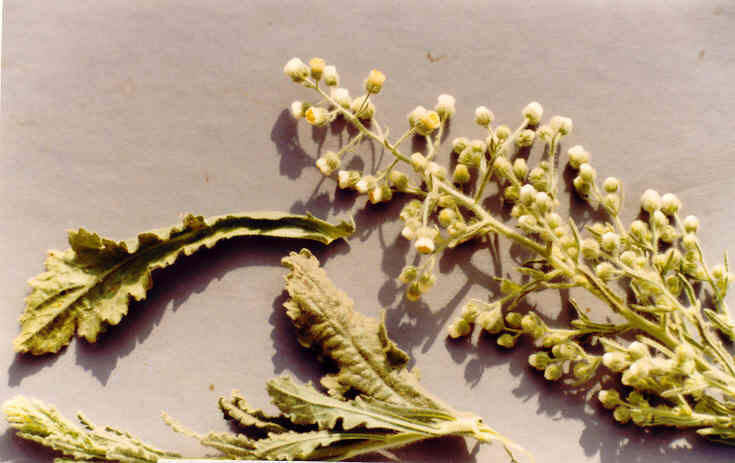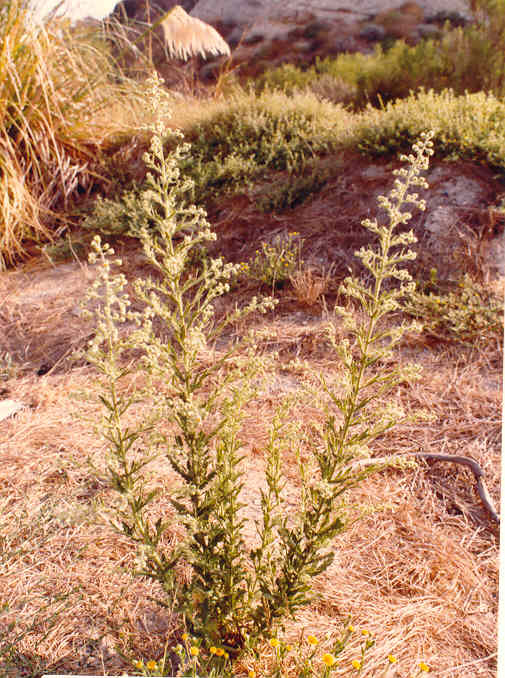
Conyza coulteri A. Gray
Asteraceae (Sunflower Family)
Native
Coulter's Conyza
Coulter's Horseweed
 |
Conyza coulteri A. GrayAsteraceae (Sunflower Family)Native
Coulter's ConyzaCoulter's Horseweed
|
September Photo
Plant Characteristics: Erect annual 2-10 dm. high, glandular-pubescent and villous or hirsute throughout, the rigid very leafy stem simple below, paniculately
branched above;
lvs. narrowly oblong, coarsely toothed, the lower petioled, the cauline sessile
and 2-6 cm. long; heads small, numerous, the lateral clusters generally not
overtopping central; peduncles 3-10 mm.; invol. 2-3 mm. high, the
linear-attenuate phyllaries hirsute and glandular, the midvein +/- green, not
resin-filled; ray fls. 125-250, pistillate, styles long-exserted, without
ligules; disk-fls. 5-15, perfect; pappus 3-4 mm., soft, whitish.
Habitat:
Occasional in moist flats below 1000 ft.; Coastal Sage Scrub, etc.;
cismontane and Imperial V.; Santa Catalina and San Clemente Ids.; Santa Cruz
Id.; E. to Colo., Tex., Mex. May-Oct.
Name:
Greek, konyza, a strong
smelling plant, fleabane. Coulteri, after Dr.
Thomas Coulter (?-1843), Irish
botanist who collected in Mexico for many years and in California in 1831-1832.
He was the first botanist to penetrate the Colorado Desert.
(Jaeger 307).
General:
Uncommon in the study area, having been collected only twice and this at
the intersection of San Joaquin Hills Rd. with Back Bay Dr. in 1983 and not
again until 1987 when several specimens were found along the path from 23rd St.
to Mariners Dr. (my comments).
See C. bonariensis for notes on
uses.
Text Ref:
Abrams, Vol. IV 382; Hickman, Ed. 240; Munz, Calif.
Flora 1224; Munz, Flora So. Calif.
149; Roberts 10.
Photo Ref:
Sept. 2 83 # 5,7.
Identity: by R. De Ruff.
Computer Ref: Plant Data 160.
Have plant specimen.
Last edit 9/24/02.
 |
September Photo